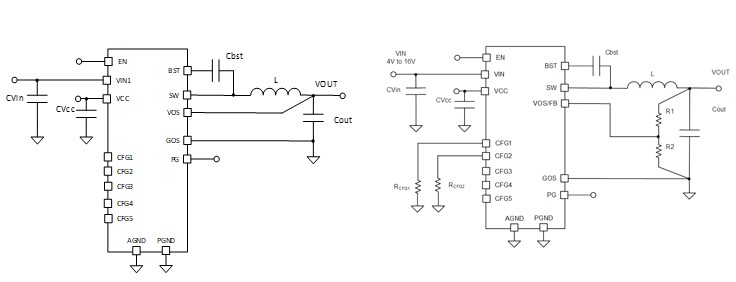SLVAF22C January 2021 – October 2024 TPS544C26 , TPS544C27 , TPS544E27 , TPS546C25 , TPS546E25 , TPS548A28 , TPS548B23 , TPS548B28 , TPS548C26 , TPS548D26 , TPS54J061 , TPS54KB20 , TPS54KC23 , TPS748A
- 1
- Abstract
- Trademarks
- 1Suggested DC/DC Converters
- 2Voltage Regulation Accuracy
- 3Load Transient Response with D-CAP4
- 4Security Features
- 5High Efficiency and Thermal Performance
- 6Linear Regulator with Adjustable Soft-Start and High Output Voltage Accuracy
- 7Conclusion
- 8Additional Resources
- 9Revision History
2 Voltage Regulation Accuracy
As the semiconductor process technology advances, processors require tighter voltage accuracy and lower operating voltages. The processor data sheet specifies the voltage tolerance as either a percentage or as a value in millivolts, which includes DC, AC and ripple variations over the entire operating temperature range. Designers also consider the tolerance of the resistor divider used by the DC/DC converter, the routing and trace losses of the circuit board, and the variations of the application, like the input voltage variations, temperature swings, and fast changes in the load.
Check the feedback voltage accuracy of the DC/DC converter in the data sheet rather than the front page. Table 2-1 shows the regulated feedback voltage, or the internal voltage reference specification of the TPS548A28, which is a 2.7V to 16V, 15A converter, and shows that the reference accuracy is ±6 mV or ±1% over the full operating temperature range. The total output voltage accuracy is improved by choosing tighter tolerance resistors for the dividing network. If more headroom is needed, designers can choose 0.1% or 0.5% resistors, even though they may cost a little bit more. The additional headroom allows a total ±3% or ±5% output voltage variation to be met with less bulk and bypass capacitance. (1)
| Parameter | Test Condition | Minimum | Typical | Maximum | Unit |
|---|---|---|---|---|---|
| Internal voltage reference | TJ = –40°C to 125°C, VCC = 3V | 594 | 600 | 606 | mV |
| TJ = 0°C to 85°C, VCC = 3V | 597 | 600 | 603 | mV |
A DC/DC converter with a selectable output voltage, which has internal voltage feedback, is advantageous to a DC/DC converter using an external voltage feedback divider to program the output voltage. A converter with internal voltage feedback, such as the TPS548B23, requires fewer external components and can provide higher voltage accuracy. Both converter types have an internal voltage reference, but the DC error of the external resistor divider is accounted for inside the converter with internal voltage feedback. Table 2-2 shows the actual output voltage of the TPS548B23 with internal voltage feedback.
| Parameter | Test Condition | Minimum | Typical | Maximum |
|---|---|---|---|---|
| Output voltage regulation accuracy | Internal Feedback Configuration, TJ = 0°C to +85°C | -0.75% | +0.75% | |
| Internal Feedback Configuration, TJ = -40°C to +125°C | -1.25% | +1.25% |
The TPS548B23 is configurable to use either external or internal feedback as shown in Figure 2-1. If the output voltage required is one of the 16 present selections, the TPS548B23 will reduce the external components and improve the output voltage accuracy. Often times, layout constraints, connectors, and board density requirements affect the total output voltage accuracy. A remote sense feature of a DC/DC converter compensates for voltage drops from long trace lines to accommodate processors needing high accuracy output voltage. This feature is especially useful when routing higher currents since the voltage drop can be a large portion of the overall DC error. Newer DC/DC converters are integrating a remote sense amplifier across the feedback pin (VOS) and ground sense return pin (GOS) instead of traditional VSNS+ and VSNS- pins to reduce the converter's pin-count. The remote sense function is fully differential in both cases and compensates for a voltage drop on the circuit board traces helping to maintain VOUT accuracy under steady state operation and load transient events.
 Figure 2-1 TPS548B23 Configured with
Internal or External Feedback
Figure 2-1 TPS548B23 Configured with
Internal or External Feedback